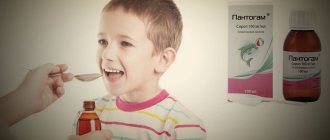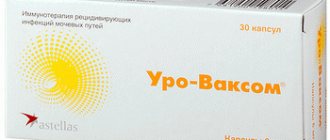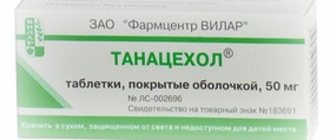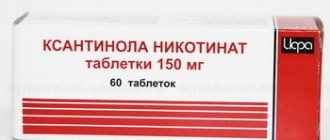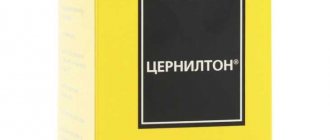For the complex treatment of functional disorders of the cerebral cortex, neurologists often recommend Piracezin. Reviews from experts confirm its high effectiveness and relative safety. The drug belongs to the nootropic combination drugs. On the pharmaceutical market, the medicine is presented in the form of white cylindrical capsules. Inside each pill there is a light powder; the capsules are packaged in cardboard packs containing 30 or 60 pieces.
Description and composition
The medication contains 2 main active components, their content in 1 capsule is:
- Cinnarizine – 25 mg.
- Piracetam – 400 mg.
The capsules also contain the following additional compounds:
- Calcium sterate.
- Magnesium hydroxycarbonate.
- Gelatin.
- Sodium lauryl sulfate.
- Titanium dioxide.
- Glycerol.
- Purified water.
General information about the drug Piracezin
Piracesin improves metabolism in brain cells, helps improve blood circulation, restores the correct functioning of calcium channels, has a vasodilator property and is able to reduce the excitability of nerve cells of the vestibular apparatus.
The medicine is produced in the Republic of Belarus.
Drug group, INN, scope of application
Piracesin belongs to the group of nootropic drugs - medications that not only help stabilize the nervous system, but also have a positive effect on cognitive processes. The international nonproprietary name of the drug corresponds to the name of the active ingredients: piracetam + cinnarizine (Piracetam + Cinnarizine). The medicine is used in the treatment of mental illnesses.
Release forms and prices for the drug, average in Russia
The drug is available only in the form of hard gelatin capsules. Inside each of them there is a white, odorless powder. In Russia, you can buy Piracezin only with a doctor's prescription.
The cost of the drug in pharmacies in Russian cities:
| Number of tablets per package | Pharmacy name, city | Price in rubles |
| 60 | "Laboratory of Beauty and Health", Moscow | 234 |
| 60 | "Pharmacopeia", Novosibirsk | 215 |
| 60 | "Zhivika", St. Petersburg | 230 |
| 60 | Samson-Pharma, Tomsk | 227 |
Compound
The drug is a combination of two active substances - piracetam (400 mg) and cinnarizine (25 mg). Auxiliary components are: magnesium subcarbonate and calcium stearate. The capsule consists of the following components:
- gelatin;
- glycerol;
- nipagin;
- nipazole;
- sodium lauryl sulfate;
- purified water;
- titanium dioxide
Pharmacodynamics and pharmacokinetics
Piracezin is a complex drug, where each of the components has certain characteristics of influence and performs different functions:
- Piracetam is responsible for stimulating metabolism, strengthening cell resistance to hypoxia, improving blood circulation in the brain and breaking down glucose.
- Cinnarizine normalizes calcium release, blocks the vasoconstrictor effect of other medications and has a vasodilator property and the ability to influence the activity of the vestibular apparatus of the body. The substance also reduces blood viscosity without affecting blood pressure.
Mechanism of action of piracetam
The drug has rapid absorption, which is achieved in a very short time. Due to good absorption, the maximum concentration in the blood is achieved within the first 40-60 minutes after taking the capsules, but sometimes within 3 hours. The maximum concentration of the substance in the blood can be affected by food intake and the gender of the patient: in women it is higher than in men.
The medication is excreted from the body by the kidneys (80-90% is excreted in the urine, 10-20% in feces). Liver failure does not affect the half-life, but renal failure may slightly increase the time of this process. The effect of the drug is felt on average 1-6 hours after taking Piracezin.
See also:
Instructions for use of the drug Cardiostatin® and its analogues
Pharmacological group
The drug belongs to the pharmacological group of nootropics. Therapeutic effects are realized due to the presence of a combination of 2 active components:
- Piracetam is a gamma-aminobutyric acid derivative that improves the functional state of the brain, cognitive processes, memory, learning ability, and attention. The mechanism of action is realized by influencing the rate of spread of excitation, improving metabolic processes, increasing blood fluidity and trophism of neurocytes, suppressing platelet aggregation (sticking together) with the formation of microthrombi in the vessels, increasing the ability of red blood cells to pass through small vessels.
- Cinnarizine is a selective blocker of slow calcium channels in neurocytes. It leads to a decrease in the flow of calcium ions into the smooth muscle cells of the walls of arterial vessels of various sizes. As a result, they relax, expand the lumen and improve blood circulation in the brain. Under the influence of cinnarizine, the cerebral arteries practically do not respond to factors that cause their narrowing (the effects of adrenaline, angiotensin, vasopressin).
After taking the capsule orally, the active ingredients are almost completely absorbed into the blood. They penetrate the blood-brain barrier into the brain tissue, where they have therapeutic effects. Piracetam does not enter into metabolism and is excreted unchanged in the urine. Cinnarizine is metabolized in the liver, inactive breakdown products are mainly excreted in the feces, and to a lesser extent in the urine.
Piracetam
Piracetam is a nootropic drug that has a positive effect on metabolic processes and blood circulation in the brain. The uniqueness of nootropics is that of all neurotropic drugs, only they can be used for both treatment and prevention. The scope of their application is very wide and extends far beyond the boundaries of any single nosology. Thus, nootropics are regulators of natural metabolic processes in the central nervous system, ensuring their unhindered flow under conditions of various stresses, as well as during aging of the body, when the brain becomes susceptible to vascular lesions, Parkinson’s disease, dementia, etc. The “pioneer” among nootropics is piracetam. Despite this, the drug is still the most popular nootropic drug, filling more than half of the total nootropic market. The biography of piracetam as a drug dates back to 1963. However, its main advantage - the ability to improve memory and assimilation of information - was discovered much later, in 1972. Piracetam has a number of important characteristics. Thus, it increases the utilization of glucose by tissues, facilitates metabolic processes, stimulates blood circulation in ischemic areas, and suppresses platelet aggregation (sticking together). Piracetam has a protective effect on the brain during various types of damage: hypoxia, toxic or electrical damage. Improves cognitive functions without having a psychostimulating or sedative effect. Among the advantages of piracetam are the lack of binding to blood plasma proteins and non-metabolism, which makes its use more predictable and significantly reduces the risk of developing unwanted side effects. Piracetam can be successfully combined with drugs from various pharmacological groups. Side effects when using piracetam are extremely rare and occur mainly in elderly patients at the initial stage of treatment, as well as when the doses recommended by the instructions are exceeded.
When taken orally, the drug is quickly and completely absorbed from the digestive tract. The maximum concentration of the active substance in the blood plasma is achieved on average after half an hour. The half-life of piracetam is 4-5 hours. The drug is excreted unchanged in the urine. In persons suffering from insufficient renal function, the half-life of piracetam increases, which must be taken into account when determining the therapeutic dose.
Piracetam is available in the form of tablets, capsules and solution for intravenous and intramuscular administration. The dose is calculated based on the patient's body weight. For adults, the daily dose is 30-160 mg per 1 kg in 2-4 doses. The duration of the medication course is 1.5-2 months. Depending on the clinical situation, piracetam can be prescribed in injection form at an initial dose of 10 g per day. When administered intravenously to patients in serious condition, the dose can be increased to 12 g. As the clinical situation improves, the dose is progressively reduced and the patient is transferred to piracetam capsules or tablets. Children are prescribed the drug in a daily dose of 30-50 mg per 1 kg of body weight in 2-3 doses. The duration of pharmacotherapy is at least 3 weeks. Patients with serious hemostasis disorders, severe bleeding, those who have undergone major surgery, and those suffering from renal failure should take piracetam with extreme caution. In case of somnological disorders, it is recommended to discontinue the evening dose of the drug and increase its daily dose proportionally. When combining piracetam with thyroid hormones, central effects may develop - anxiety, irritability, tremor, confusion. When combining the drug with stimulants of the central nervous system, the psychostimulating effect may be potentiated. The combination of piracetam with antipsychotics causes increased extrapyramidal disorders.
Indications for use
The medicine is prescribed for the complex treatment of pathological conditions accompanied by impaired functional state of the brain.
for adults
The drug is prescribed for the complex treatment of the following pathological conditions that are medical indications:
- Chronic cerebrovascular insufficiency.
- Pathology of the central nervous system, accompanied by impairments of memory and intelligence.
- Psychoorganic syndrome, manifested by a predominance of signs of adynamia and asthenia.
- Asthenia of psychogenic origin.
- Labyrinthopathies of various natures, which are characterized by the development of dizziness.
- Meniere's syndrome.
- Kinetosis, migraine (the medicine is used to prevent the development of attacks).
for children
The medicine is not used.
for pregnant women and during lactation
The medication is contraindicated.
Indications and contraindications for taking Piracezin
Indications for the use of the nootropic Piracesin as treatment or prevention:
- circulatory disorders in the brain associated with strokes;
- encephalopathy;
- diseases of the central nervous system (intoxication, injuries of various types), which lead to impaired cognitive abilities;
- psychoorganic syndrome;
- asthenia;
- Meniere's syndrome (tinnitus, nausea, vomiting, etc.);
- labyrinthopathy;
Labyrinthopathy
- migraine;
- kinetosis;
- developmental disorders in children.
The drug is often prescribed to patients who have had a stroke. The active substances of this nootropic increase the possibility of restoring speech abilities. However, this medicine may not be used for all types of stroke.
The drug should not be prescribed in the following cases:
- intolerance to the components of the medication;
- parkinsonism;
- during pregnancy or breastfeeding;
- agitated depression;
- age under 18 years;
- Huntington's chorea;
- hemorrhagic stroke.
Hemorrhagic stroke
Only under the close supervision of a physician can it be taken by patients with the following disorders:
- surgical interventions performed;
- bleeding;
- hemostasis disorders;
- disorders of the liver and kidneys.
Interesting! Athletes are not recommended to take this nootropic before competitions, as Piracesin can distort the results of a blood doping test.
See also:
Indications for use of the drug Telmista and its instructions
Contraindications
There are several pathological and physiological conditions that are contraindications for taking capsules:
- Chronic kidney failure.
- Hemorrhagic stroke (bleeding into brain tissue with their death).
- Psychomotor agitation.
- Pregnancy at any stage, lactation period.
- Individual intolerance to cinnarizine, piracetam or auxiliary components.
- Parkinsonism, including Parkinson's disease.
- Huntington's chorea.
- Children and teenagers up to 18 years of age.
The drug is prescribed with caution for bleeding disorders, severe bleeding, moderate renal failure, and after major surgical interventions.
Features of the medicine
The drug "Pyracesin" has quite a lot of varied responses. Reviews also have analogues, but due to the fact that all medications belong to the category of nootropics, they have the same common features:
- Medicines consist of two active components.
- The drugs affect platelet aggregation, so people with signs of internal bleeding should use tablets or capsules with great caution. A similar rule applies to those patients who are planning surgery or have recently undergone surgery.
- If therapy is necessary for elderly patients, it is important to undergo regular tests and monitor kidney function indicators. In this case, the dosage of the drug may change downward.
- The medicine reduces psychomotor reactions and affects concentration; therefore, it is not recommended to operate complex machinery or a car during therapy.
While taking the medicine, drinking alcohol and ethanol-based drugs is strictly prohibited.
Applications and dosages
Capsules are taken orally during or after meals. They are not chewed and washed down with a sufficient volume of water, which facilitates passage through the esophagus.
for adults
The average recommended therapeutic dose is 1-3 capsules 3 times a day. The duration of treatment ranges from 1 to 3 months. For moderate chronic renal failure, the dose is reduced.
for children
The medication is contraindicated regardless of age category.
for pregnant women and during lactation
The drug is not prescribed.
Dosage regimens and dosage
It has only the recommended “Pyracesin” instructions for use. Feedback from patients shows that if you follow all the doctor’s prescriptions, you can achieve the maximum effect from therapy. However, only a specialist can describe the course of treatment and dosage of the drug. The annotation offers only an approximate scheme for taking pills.
So, on average, the recommended dosage is 1-3 capsules, which must be taken throughout the day at regular intervals. The duration of the course may also vary. For uncomplicated pathologies, therapy may take one month. In more severe cases, treatment continues for up to three months. It is worth considering that when using the drug against the background of renal failure, the dosage is reduced by almost half. However, a more detailed course should be outlined by a neurologist.
Side effects
After starting to take the capsules, the following side effects may appear:
- Digestive system – nausea, periodic vomiting, diarrhea, abdominal pain.
- Nervous system – motor disinhibition, insomnia or drowsiness, headache, prolonged depression of mood, agitation, irritability, imbalance and gait, anxiety, epileptic seizures, hallucinations, confusion.
- Sense organs – vertigo.
- Metabolism – weight gain.
- Skin – itching, rash, dermatitis, urticaria.
- Allergic reactions - angioedema, anaphylactic shock.
Consequences of taking capsules
A strong nootropic drug is Piracezin. Instructions for use, reviews of analogues indicate that medicines based on cinnarizine and piracetam can cause negative consequences. Most often, patients complain of the following unpleasant symptoms:
- nausea and vomiting, abdominal pain and diarrhea;
- drowsiness or, conversely, insomnia, headache, irritability, anxiety attacks, confusion, uneven gait, severe agitation;
- sometimes while taking it there is some weight gain;
- People with a sensitive reaction may develop dermatitis, skin rashes, itching and urticaria.
Among allergic reactions, the most dangerous are anaphylactic shock and angioedema, which threaten the life and health of the patient.
Interaction with other drugs
When used simultaneously with certain drugs, their pharmacodynamics change:
- Strengthening the therapeutic effects of other nootropics, antihypertensives, drugs that inhibit the activity of the nervous system, including alcohol.
- Iodine-containing drugs and thyroid hormones can lead to severe irritability, sleep disturbances, and confusion.
- In high doses, the activity of indirect coagulants increases.
- Vasodilators increase the activity of cinnarizine, and hypertensive drugs reduce it.
Contraindications and side effects
Like any type of medication, Piracezin has a number of contraindications for use. It is prohibited to use the drug in the following cases:
- Hypersensitivity to basic active substances.
- Severe stages of kidney and liver failure.
- Hemorrhagic stroke.
- The period of bearing a child.
- Breast-feeding.
- Neurological parkinsonism syndrome.
- Pathopsychological anxiety states.
- Children under 6 years of age.
The occurrence of side effects may be due to non-compliance with instructions and overdose of the drug, as well as hypersensitivity. In the latter case, a severe allergic reaction occurs.
the following side effects may occur :
- retardation in movements;
- increased irritability;
- drowsiness and depression;
- headache;
- confusion;
- nausea;
- eruption of gastric contents;
- anaphylactic shock;
- Quincke's edema;
- dermatitis.
special instructions
Before you start taking the capsules, pay attention to the following special instructions:
- When prescribing anticoagulants simultaneously, care must be taken and periodic monitoring of the state of hemostasis (blood coagulation system) to prevent bleeding.
- During the course of therapy, alcohol intake is excluded.
- With long-term use of the drug, the functional state of the kidneys and liver should be periodically monitored, especially in the elderly.
- While taking capsules, caution should be exercised when performing potentially dangerous work that requires increased concentration and speed of psychomotor reactions.
Similar means
The following medications are synonyms for Piracezin:
- Combitropil is a nootropic drug that is a combination of piracetam and cinnarizine. Contraindications are similar to Piracezin, but can be used to treat children over 5 years of age. Interacts with other medications and may affect your ability to drive. Prices in pharmacies range from 60 to 95 rubles per package.
Omaron is a complete analogue of Piracezin, but its price starts from 115 rubles. The medicine can be purchased at any pharmacy in Russia.- Fezcetam - has a similar composition, mechanism of action, contraindications, but the list of undesirable effects on the body, in addition to other symptoms, indicates the occurrence of tremor in elderly patients. The price is about 200 rubles per package.
- Phezam is an absolute substitute for Piracezin. The list of side symptoms, in addition to the traditional ones, also includes excessive salivation and a possible increase in libido due to the use of the drug. In Russia, the medicine can be bought for 240 rubles.
See also:
Instructions and indications for use of the drug Bisangil
Analogs
In the modern pharmaceutical market, there are structural analogues for Piracezin capsules.
Omaron
The medication is available in tablet form for oral administration. It is prescribed for the complex treatment of pathological conditions accompanied by impaired functional state of brain structures. The medicine is intended only for adults.
Fezam
Capsules that contain piracetam and cinnarizine. They are prescribed for the complex treatment of cerebrovascular insufficiency and other pathological conditions affecting the functional activity of the brain. The drug is not intended for children, adolescents, pregnant and breastfeeding women.
Medicinal composition
“Pyracezin” has multiple positive reviews. The release form suggests only capsules, but some patients mistakenly call the medicine tablets. The composition of each pill is based on the action of two main substances:
- piracetam, the content of which in one pill is 400 mg;
- cinnarizine, the content of which is 25 mg.
In addition to the active ingredients, the medicine also contains auxiliary compounds that are necessary for the formation of the structure of the medicine and its better digestibility. However, these substances influence the medicinal properties, but can cause individual intolerance or an allergic reaction:
- gelatin;
- calcium stearate;
- glycerol;
- titanium dioxide;
- magnesium hydroxycarbonate;
- sodium lauryl sulfate;
- purified water.
The drug belongs to the group of nootropics. Its therapeutic effect is based on the activity of two main components.


